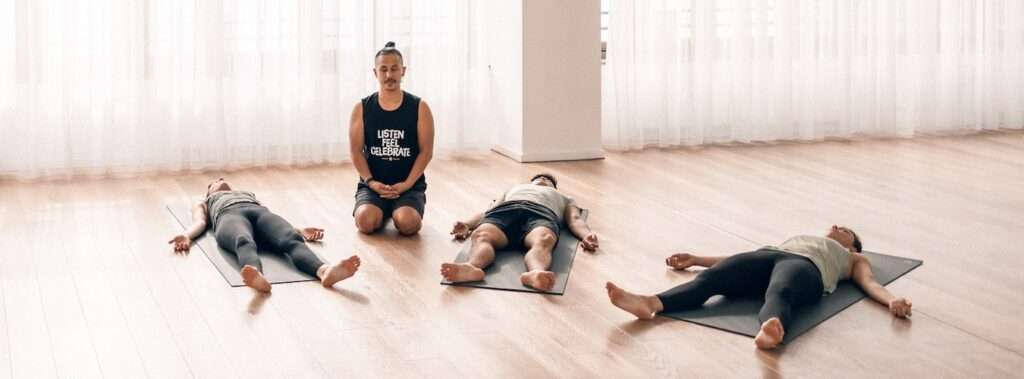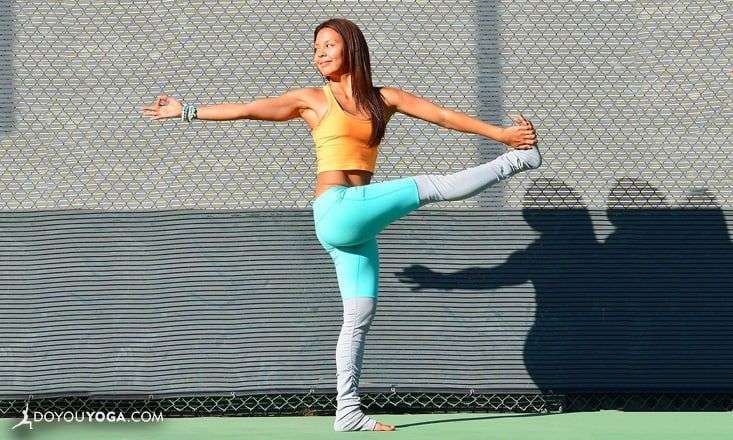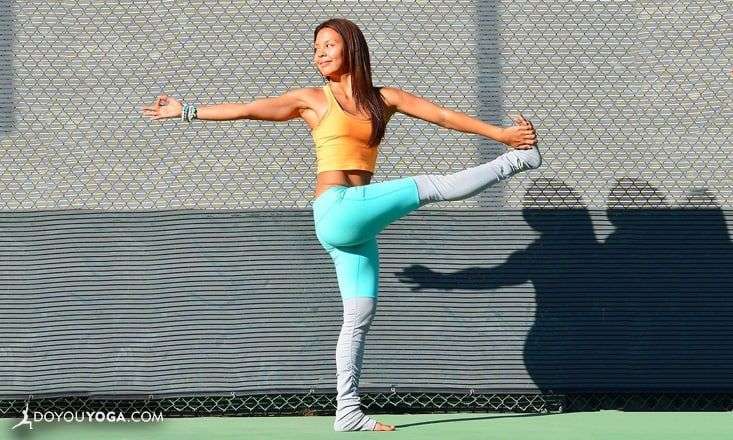So, you’ve just started incorporating yoga into your fitness routine and you’ve noticed that after each session, your muscles feel a bit sore. It’s got you wondering if this is a common occurrence or if there’s something wrong with your practice. Well, the good news is that feeling sore after a yoga session is actually quite common, especially for beginners. In this article, we’ll explore why this happens and provide some tips on how to alleviate the discomfort. So, grab your yoga mat and let’s get started!

Understanding Muscle Soreness
Have you ever experienced muscle soreness after a yoga session? If so, you’re not alone. Muscle soreness is a common side effect of physical activities such as yoga. Understanding what causes muscle soreness, how it can be alleviated, and when it may be necessary to seek medical attention can help you better manage and enjoy your yoga practice.
Causes of Muscle Soreness
Muscle soreness can be caused by various factors. The most common cause is a phenomenon called Delayed Onset Muscle Soreness (DOMS). DOMS typically occurs within 24 to 48 hours after exercising and can last for several days. During intense or unfamiliar physical activities like yoga, small micro-tears can occur in the muscle fibers. These tears cause inflammation and result in muscle soreness.
Another cause of muscle soreness is muscle fatigue. When you exert your muscles for an extended period, they can become fatigued, leading to discomfort and soreness. Additionally, more serious muscle tears can also result in soreness and pain.
Delayed Onset Muscle Soreness (DOMS)
Delayed Onset Muscle Soreness (DOMS) is the most common type of muscle soreness experienced after a yoga session. DOMS typically sets in 24 to 48 hours after exercise and is characterized by muscle tenderness, stiffness, and reduced range of motion. The severity of DOMS can vary depending on the intensity and duration of the yoga session, as well as individual factors.
Muscle Fatigue
Muscle fatigue occurs when your muscles are overworked and exhausted. It is a common cause of muscle soreness after a yoga session, especially if the session was particularly challenging or lengthy. If you feel a deep ache or heaviness in your muscles, it may be a sign of muscle fatigue.
Muscle Tears
While muscle tears are less common in yoga compared to high-impact activities like weightlifting or running, they can still occur. When the muscles are pushed beyond their capacity or exposed to sudden, forceful movements, tears can happen. These tears can cause intense soreness, swelling, and limited range of motion.
Inflammation
Inflammation is a natural response of the body to injury or stress. When the muscles are subjected to intense physical activity like yoga, they can become inflamed, leading to soreness and discomfort. Inflammation is closely associated with DOMS and is responsible for the pain and stiffness experienced after a yoga session.
Factors that Influence Soreness
Several factors can influence the level of soreness you experience after a yoga session. Understanding these factors can help you gauge your body’s response and make adjustments as needed.
Intensity of the Yoga Session
The intensity of your yoga session can directly impact the extent of muscle soreness you may experience. High-intensity yoga practices that involve vigorous flows and challenging poses are more likely to cause muscle soreness compared to gentle or restorative sessions.
Duration of the Yoga Session
The duration of your yoga session also plays a role in muscle soreness. Longer sessions that involve continuous movement and engagement of various muscle groups are more likely to result in soreness compared to shorter sessions.
Frequency of Yoga Practice
The frequency of your yoga practice can affect muscle soreness as well. If you are new to yoga or haven’t practiced in a while, your muscles may be more prone to soreness. As you consistently practice and build strength and endurance, muscle soreness may become less frequent.
Level of Fitness
Your level of fitness also influences how your body responds to yoga. If you are relatively new to physical activities or have a low level of fitness, you may experience more significant muscle soreness compared to someone who is more physically active and has developed stronger muscles.
Individual Differences
Every individual is unique, and factors such as genetics, age, and overall health can influence how your body responds to yoga. Some people may be more susceptible to muscle soreness, while others may experience minimal soreness even after challenging sessions. Listening to your body and understanding your own limits is crucial in managing muscle soreness effectively.

How to Alleviate Muscle Soreness
While muscle soreness after a yoga session is usually temporary and a sign that your muscles are getting stronger, there are several strategies you can employ to alleviate the discomfort and promote faster recovery.
Rest and Recovery
Giving your body adequate rest and recovery time is essential for reducing muscle soreness. Take a day or two off from intense yoga sessions to allow your muscles to heal and rebuild. Engaging in gentle forms of movement or opting for restorative yoga sessions can help promote blood circulation and provide relief to sore muscles.
Gentle Stretches and Mobility Exercises
Performing gentle stretches and mobility exercises can help alleviate muscle soreness and improve flexibility. Incorporate stretches that target the muscles you worked during your yoga session. Focus on slow, controlled movements and avoid any stretches that cause pain or discomfort.
Hydration and Nutrition
Proper hydration and nutrition are crucial for muscle recovery. Make sure to drink plenty of water to replace any fluids lost during your yoga session. Additionally, consuming a balanced diet that includes protein, healthy fats, and carbohydrates can provide the necessary nutrients for muscle repair and growth.
Foam Rolling and Self-Massage
Foam rolling and self-massage techniques can help release tension and reduce muscle soreness. Using a foam roller or massage tools, apply pressure to your sore muscles, focusing on areas that feel particularly tight or tender. Move slowly and mindfully, applying just enough pressure to elicit a gentle release.
Ice or Heat Therapy
Applying ice or heat to sore muscles can provide temporary relief. Ice therapy helps reduce inflammation and numbs the area, while heat therapy improves blood flow and relaxes the muscles. Experiment with both methods to see which works best for you, and always use a barrier such as a towel to protect your skin from direct contact with the ice or heat pack.

Preventing Soreness
While muscle soreness cannot always be completely avoided, there are several steps you can take to minimize its occurrence.
Proper Warm-up and Cool-down
A proper warm-up before your yoga session and a thorough cool-down afterward can help prepare your muscles for exercise and facilitate recovery. Incorporate dynamic movements and stretches into your warm-up routine and end your practice with gentle stretches and relaxation poses.
Gradual Progression
Gradually progressing in your yoga practice can help reduce the likelihood of muscle soreness. Avoid pushing yourself too hard or attempting advanced poses before your body is adequately prepared. Instead, focus on building strength and flexibility gradually over time.
Listening to Your Body
One of the most important aspects of preventing soreness is listening to your body. Pay attention to any discomfort or pain during your yoga practice and modify poses or take breaks as needed. Pushing through intense pain or ignoring warning signs can lead to injury and more severe soreness.
Mixing Up Your Routine
Varying your yoga routine can prevent repetitive strain on specific muscle groups and reduce the risk of muscle soreness. Incorporate different styles of yoga, explore new poses, and engage in cross-training activities to work different muscle groups and promote overall balanced strength and flexibility.
Proper Technique and Alignment
Maintaining proper technique and alignment during your yoga practice is crucial for preventing muscle soreness and the risk of injury. Focus on executing poses correctly, engaging the appropriate muscles, and listening to your instructor’s guidance. Proper alignment helps distribute the workload evenly across your muscles and joints.

When to Seek Medical Attention
Although muscle soreness is a normal part of the recovery process, there are instances when it may be necessary to seek medical attention.
Persistent or Severe Pain
If your muscle soreness persists for an extended period or becomes increasingly severe, it is recommended to consult a healthcare professional. They can assess your condition and determine if there is an underlying issue that requires further evaluation or treatment.
Limited Range of Motion
If you experience significant difficulty or a noticeable decrease in your range of motion accompanied by muscle soreness, it may be a sign of a more serious injury. Seeking medical attention can help identify the cause and prevent further damage.
Signs of Injury
If you notice any signs of injury such as bruising, swelling, or sharp, stabbing pain, it is essential to consult a healthcare professional. Injuries may require specific treatment or rehabilitation to ensure proper healing and prevent long-term complications.
Pre-existing Health Conditions
If you have any pre-existing health conditions that may affect your ability to recover from muscle soreness, it is wise to consult with your healthcare provider. They can provide guidance tailored to your specific needs and recommend appropriate modifications or precautions.
Consultation with a Healthcare Professional
If you have any concerns or questions about muscle soreness after a yoga session, it is always a good idea to consult with a healthcare professional. They can provide personalized advice based on your individual circumstances and help ensure a safe and enjoyable yoga practice.

Conclusion
Feeling sore after a yoga session is a common experience, and understanding the causes, how to alleviate soreness, and when to seek medical attention can empower you to manage it effectively. By incorporating strategies like rest and recovery, gentle stretches, proper hydration, and listening to your body, you can strike a balance between challenging yourself and taking care of your muscles. Remember, muscle soreness is a temporary phase in your yoga journey, and with time, patience, and proper self-care, it can become a mere reminder of the strength and resilience you’re building within yourself.
